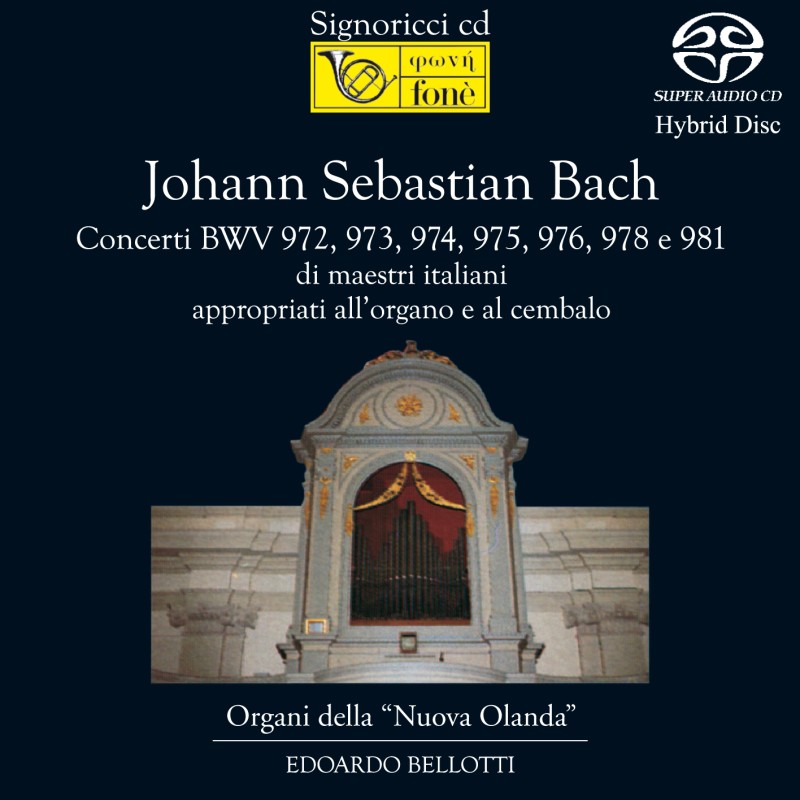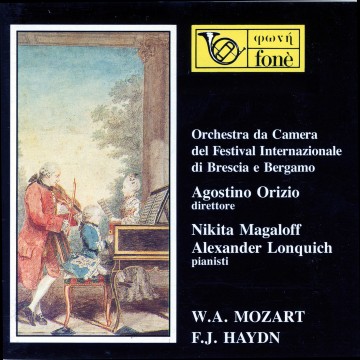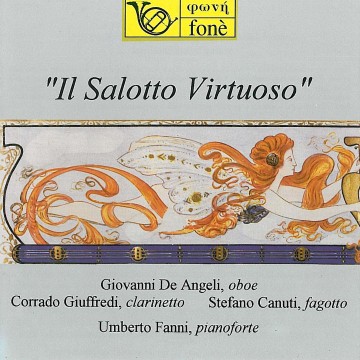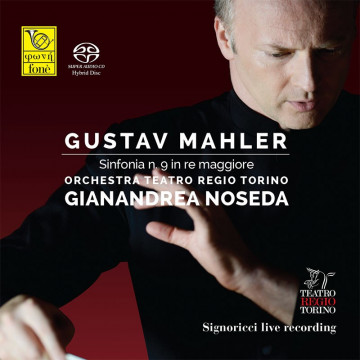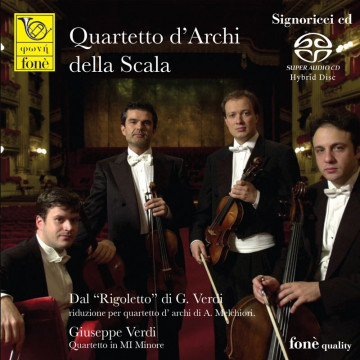Johann Sebastian Bach - E. M. Bellotti
This album presents a selection of organ transcriptions by Johann Sebastian Bach, inspired by Italian and German concertos, offering a fascinating glimpse into his youthful musical language. Edoardo Maria Bellotti performs the BWV 972–981 with elegance and depth, highlighting the dialogue between European Baroque traditions and Bach’s unique artistry. Thanks to the high-resolution recording, every tonal nuance of the organ is captured with remarkable clarity, delivering an intense and engaging listening experience for all classical music lovers.
1. Concerto in re maggiore BWV 972, op. 3 n. 9 - (Allegro)
2. Concerto in re maggiore BWV 972, op. 3 n. 9 - Larghetto
3. Concerto in re maggiore BWV 972, op. 3 n. 9 - Allegro
4. Concerto in sol minore BWV 975, op. 4 n. 6 - (Allegro)
5. Concerto in sol minore BWV 975, op. 4 n. 6 - Largo
6. Concerto in sol minore BWV 975, op. 4 n. 6 - Giga, Presto
7. Concerto in sol maggiore BWV 973, op. 7 n. 2 - (Allegro)
8. Concerto in sol maggiore BWV 973, op. 7 n. 2 - Largo
9. Concerto in sol maggiore BWV 973, op. 7 n. 2 - Allegro
10. Concerto in do minore BWV 981, op. 1 n. 3 - Adagio
11. Concerto in do minore BWV 981, op. 1 n. 3 - Vivace
12. Concerto in do minore BWV 981, op. 1 n. 3 - (Grave)
13. Concerto in do minore BWV 981, op. 1 n. 3 - Prestissimo
14. Concerto in fa maggiore BWV 978, op. 3 n. 3 - Allegro
15. Concerto in fa maggiore BWV 978, op. 3 n. 3 - Largo
16. Concerto in fa maggiore BWV 978, op. 3 n. 3 - Allegro
17. Concerto in re minore BWV 974 - Allegro
18. Concerto in re minore BWV 974 - Adagio
19. Concerto in re minore BWV 974 - Presto
20. Concerto in do maggiore BWV 976, op. 3 n. 12 - (Allegro)
21. Concerto in do maggiore BWV 976, op. 3 n. 12 - Largo
22. Concerto in do maggiore BWV 976, op. 3 n. 12 - Allegro
Between them, Johann Gottfried Walther and Johanm Sebastian Bach produced around forty keyboard transcriptions of concertos by mainly Italian composers while they were both in the employ of the Weimar court. This was in no small way due to the influence of the young Duke Johann Ernst of Saxe-Weimar whose passion for the Italian concerto-form led him to compose several himself (some of which were admired and published by Telemann) before ill-health unfortunately put a stop to such activity. However, Bach and Walther were not the first to attempt such transcriptions; we learn from several sources that the Dutch organist Johann Jacob Grave normally included transcriptions of instrumental concertos in the recitals which he gave regularly in the Nieuwe Kerk in Amsterdam. Mattheson tells us that the famous blind organist Grave. Duke Johann Ernst had spent some time in Amsterdam where he would have had the opportunity of hearing Grave; it is therefore likely that such an experience led him to introduce the Italian concerto to the musicians at the Weimar court. Moreover his contacts with the music- publishing establisbment in Amsterdam, where much Italian music was printed, would have given Bach and Walther access to prints and manuscripts of concertos by Italian composers, Vivaldi in particular. Of the twenty-one transcriptions made by Bach, five are for organ, the rest for harpsichord. Two of the organ arrangements are of concertos by Johann Ernst, the other three are of Vivaldi’s Opus III nos. 8 and 11, in a minor and d minor, respectively, and of his Opus VII no.5 in D major (which Bach transposed to C major). All these Vivaldi concertos were published in Amsterdam between 1710 and 1716. Of the concertos transcribed for harpsichord, six are by Vivaldi, one by Alessandro Marcello, one by Benedetto Marcello, one by Telemann three by Duke Johann Ernstand four of unknown origin. As ia the case of Walther’s transcriptions, the choice of models reflects a clear preference for Italian composers, especially for Vivaldi. Alberto Basso has stressed the exceptional nature of the relationship between Vivaldi and Bach: “The threads connecting the two composers are so inscrutable that it is difficult to imagine a similar relationship in the whole history of music.” It is amazing to think that Alessandro Marcello’s d minor Concerto for Oboe and Strings was known only in the form of Bach’s transcription unti1 the beginning of this century, attributed by different scholars to Bach himself, to Vivaldi and to Benedetto Marcello, until the original instrumental version came to light in an anthology of oboe concertos where it was attributed to Alessandro Marcello. There is no doubt that, for Bach, work on those transcriptions was an education in itself: studying Vivaldi’s scores enabled the young composer to have first-hand knowledge of the Italian style that was to have such a marked influence on his music. (One only has to think of, for example, the “Italian Concerto” for harpsichord, or the C major Toccata, Adagio and Fugue for organ.) There are two good reasons for choosing to perform some of these concertos on the organ rather than the harpsichord. In the first place, so much of the keyboard repertoire of the 17th and 18th centuries was not in fact written with a specific instrument in mind. In Bach’s case, the five concertos arranged specifically for organ are very close in style to those transcribed for harpsichord. In both we find violin type figuration (arpeggios, repeated notes and fast runs) while the slow movements reveal the same kind of harmonic and melodic treatment in each set. The second reason is the appropiateness of the particular organs used for this recording. Quite apart from the obvious geographical and historical links between music by the two Marcellos and Vivaldi and Venetian 18th century instruments, these organs are particularly well adapted for playing these works, thanks to the brilliance of the pleno, the clear tone of the open diapason and the quick speech of the solo stops. With the choice of stops (see below) I have attempted to be as faithful as possible to the nature and character of the music while, at the same time, making full use of the variety of tone- colours that these instruments offer.
Edoardo Bellotti - Translated C.Stembridge

